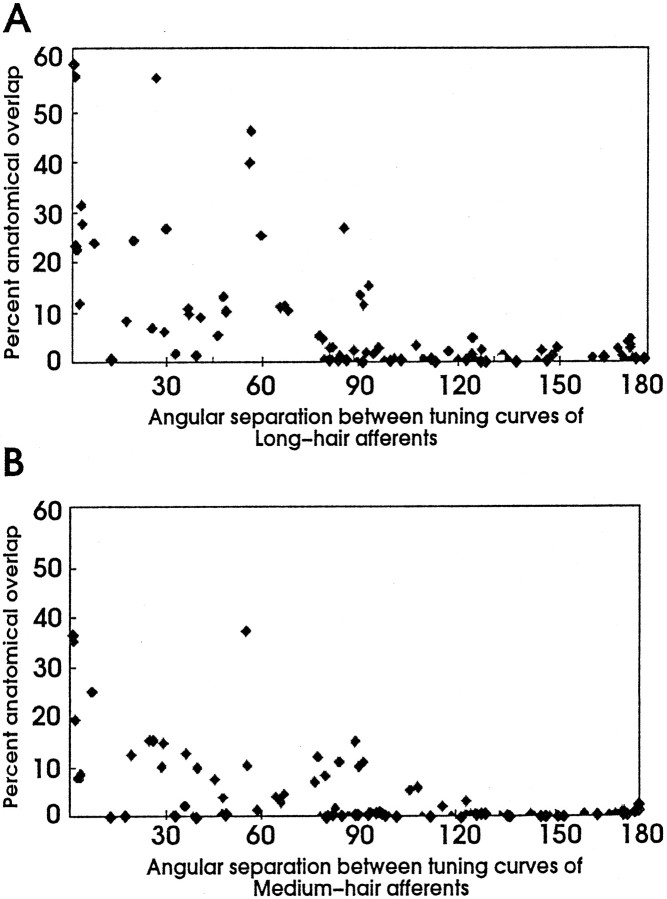Fig. 4.
Correlation between anatomical overlap and differences in directional tuning. A, B, Relationship between the amount of anatomical overlap and angular separation among pairs of L and M afferents, respectively. Both graphs show that percent anatomical overlap between afferents decreases as the distance between their directional tuning increases. There is essentially no anatomical overlap between afferents whose directional tuning is >90°. Note that percent anatomical overlap is less between pairs of M hair afferents compared with the same pairs of L afferents.

